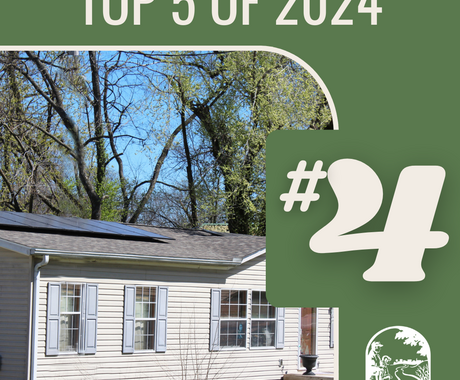Do you want to be a part of transforming solar energy accessibility and affordability in Nebraska?
The Center has been awarded $62 million to provide technical and financial assistance to support community, rooftop, and multifamily affordable housing solar projects. We will implement the Nebraska Solar for All program statewide and include rural, urban, suburban, and Tribal communities. In addition, the program will provide resources to help train workers to install and maintain the new installations.
This grant will allow us to increase the amount of deployed solar energy in the state by more than 60 megawatts over five years and ensure low-income and historically disadvantaged residents can be full participants in the new energy economy.
Jobs available
Now hiring
Interested? Help make history.
Implementing the Solar for All program in Nebraska will require partnering with communities, organizations, utilities and developers. Please complete this form if you are interested in collaborating on this historic project.
We want to partner with you
Low-interest loans, grants, and subsidies
We anticipate financial products to be available in summer 2025. EPA expects to have contracts in place with awardees by September after which there will be a one-year planning period before the launch of financial products.
We aim to reach more than 9,000 households in Nebraska and deploy more than 60 megawatts. of new residential-serving solar energy, supporting three key components:
- Community solar: Collaborating with public utilities in the state to develop residential-serving community solar arrays, allowing eligible residents to participate through subscriptions or by owning panels.
- Multifamily affordable housing solar: Partnering with utilities, housing developers, and low-income housing financing partners to deploy solar for income-qualified multifamily housing units.
- Rooftop solar: Providing behind-the-meter or rooftop solar for qualified households, screening residents for eligibility and site suitability, and connecting them to technical service providers and solar installers.
Eligibility — 100% of Solar for All program dollars must benefit eligible households. Households can qualify in one of three ways. (1) Have a household income that is 80% of the average median income or less. (2) Demonstrate enrollment in one of a number of other income-qualified programs (e.g. income-qualified housing, low-income energy assistance program). (3) Be located in a Climate and Economic Justice census tract or in EJ Supplemental Index census tracts.
Affordability — Participants in Solar for All must realize bill savings on average of 20% of their electric bill. This can be modeled. For example, if the average residential bill of a utility is $120/month, the savings benchmark is $24. This can be delivered through net metering, a bill credit, or through a third-party subsidy.
Timeline
April 22, 2024 - EPA announced its intent to award the Center for Rural Affairs $62 million for the proposed Nebraska Solar for All Program.
May through September 2024 - EPA negotiates cooperative agreements with all Solar for All awardees. Agreements to be in place no later than September 30, 2024.
October 2024 - Initial program launch. Start of one-year planning period.
October 2024 through September 2025 - One-year planning period. Partners, stakeholders, developers, and others will engage in detailed planning to identify and develop both technical assistance and financial assistance programs. Initial pilot projects will also occur.
October 2025 through September 2029 - Ongoing technical assistance and financial assistance will be available to qualifying projects.
What kind of assistance will be available?
Nebraska Solar for All will provide both technical assistance and financial assistance.
Technical assistance — Up to 25% of the award can be used for technical assistance (broadly defined) to support projects. This includes subawards, contracts, consultants, staffing, and program administration. Technical assistance includes general program outreach, planning, program design, project assistance, etc. Technical assistance will be delivered by Center staff, subcontracted partners, and contractors.
Financial products — At least 75% of the grant award amount must be deployed in financial products including loans, low-interest loans, subsidies, and rebates. The Center’s application proposes a financial assistance model that includes a mix of low or no-interest loans, grants, and subsidies. For each project, the mix of financial assistance would be calibrated to achieve the required 20% reduction in participants' electricity bill. The financial assistance model will be further developed during the one-year planning period.
EPA’s Solar for All program favored the development of long-lasting programs. The Center’s intention is to use the Solar for All award to develop a long-lasting program that can continue to serve eligible households beyond the 5-year grant period. This includes revolving funds from the initial projects into additional projects over time.
Partners and availability in other states
In developing its Nebraska Solar for All proposal, Center staff met with more than 50 stakeholders including utilities, state agencies, housing developers, housing organizations, solar developers, workforce partners, community-based organizations, and Tribes.
The funding is part of the Environmental Protection Agency's (EPA) Solar for All program, a part of the Greenhouse Gas Reduction Fund established by the Inflation Reduction Act. As part of the program, the EPA awarded 60 grants—totaling $7 billion—to states, territories, Tribal governments, municipalities, and nonprofits to facilitate low-income and historically disadvantaged community participation in residential solar energy. The Solar for All program aims to lower energy costs and reduce pollution in underserved communities across the country by installing solar power systems.
To find Solar for All in your state, click here for a full list of awards: epa.gov/greenhouse-gas-reduction-fund/solar-all



